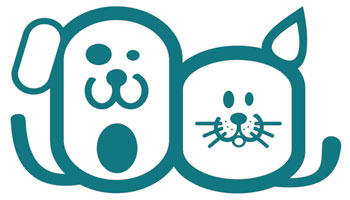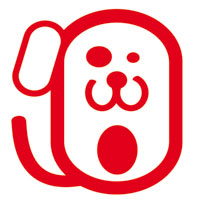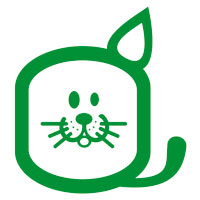Los Artículos sobre Mascotas (Perros o Gatos) de PETSmania
Ir a indice de Artículos
Perro de Pastor de Europa del Sureste
Estandar de la Raza Perro de Pastor de Europa del Sureste
Por :
Hainaut (Bélgica)
Seccion:
FCI-Standard N° 357 / 19.05.2009/ EN
SOUTHEASTERN EUROPEAN SHEPHERD
(Ciobanesc Romanesc de Bucovina)
TRANSLATION: RKC & SKC, revised by Jennifer Mulholland.
ORIGIN: Southeastern Europe.
PATRONAGE: Romania and Serbia.
DATE OF PUBLICATION OF THE OFFICIAL VALID STANDARD: 26.03.2009.
UTILIZATION: Guardian for flocks and an excellent watchdog.
FCI-CLASSIFICATION:
Group 2 Pinscher & Schnauzer, Molossoids breeds, Swiss Mountain and Cattle dogs.
Section 2.2 Mountain type Molossoids.
Without working trial.
BRIEF HISTORICAL SUMMARY:
It is a natural breed with its origin in the Carpathian Mountains (Romania and Serbia) and the South of Danube (some regions of Bulgaria). Special attention for the development of the breed arose in the regions of northeastern Romania, the county of Bucovina as well as in the South of the Danube (Serbia) : the well-known transhumance areas of the shepherds since immemorial times. Selection and improvement have lead to the actual type. The breed is successfully used both for defending the flocks and herds and as watchdogs for households in the mentioned regions.
GENERAL APPEARANCE:
Large sized dog; commanding, haughty and proud. The breed has an obvious sexual dimorphism.
IMPORTANT PROPORTIONS:
The length of the body is slightly superior to the height at the withers. The length of the skull is equal to the length of the muzzle.
BEHAVIOUR/CHARACTER:
Balanced, calm and loyal, he likes children. It is a very good guardian for flocks, courageous and a real fighter against the possible animals of prey (bear, wolf, and lynx). It has a strong bark. When strangers or animals approach, its barking is very strong, with a low tonality. During the night, it patrols around the household or the flock/herd.
HEAD: Massive but not heavy, slightly higher than the topline.
CRANIAL REGION :
Skull: Moderately wide, slightly domed. The upper profile of the skull and muzzle are slightly divergent. Viewed from the front, the skull is slightly domed, seen from the side it is almost flat.
Skull width: males 16-18 cm, females 15-17 cm, zygomatic arches are moderately developed. Occipital protuberance is slightly evident.
Stop: Slightly pronounced.
FACIAL REGION :
Nose: Large, well developed, black.
Muzzle: Blunt, of the same length as the skull; well developed, narrowing progressively towards the nose but never pointed; strong mandible.
Lips: Thick and tight, strong pigmentation.
Jaws/Teeth: Strong jaws; complete dentition, strong, healthy and white teeth, well set; scissor bite. Pincer bite is tolerated.
Cheeks: Not prominent.
Eyes: Small related to the head; almond-shaped and obliquely, brown or slightly light but never yellow. Eyelids well pigmented.
Ears: Relatively high set, “V” shaped with slightly rounded tip, pendent and carried close to cheeks. Cropping is prohibited.
NECK: Medium length, large and strong, without dewlap.
BODY: Good stamina.
Topline: Horizontal.
Withers: Slightly evident.
Back: Strong and muscular.
Loin: Muscular and strong.
Croup: Muscular and moderately inclined towards base of tail.
Chest: Broad and deep, descending to elbows, well sprung ribs.
Underline: Slightly ascendant.
TAIL: High set-on. At rest, it is pendent; reaching to or lower than the hock; when the dog is alert or in action the tail is raised up to the level of the back or slightly above it, with slight upward curve, but never curled over the back. Docking is prohibited.
LIMBS:
FOREQUARTERS:
General appearance: Upright, seen from the front or the side. Shoulders: Long, oblique, well muscled and firmly attached to the body. Scapular-humeral angle approximately 100-110°.
Upper Arm: Moderately long, muscular.
Elbow: Close to the body, free movement.
Forearm: Strong, not too long.
Carpus (wrist): Strong.
Pastern: Short, slightly slanting.
Forefeet: Oval, compact and massive, toes tight and arched, black or ashen nails.
HINDQUARTERS:
General appearance: Muscular and strong, normal in stance.
Upper Thigh: Medium long, wide, very muscular.
Stifle: Femoral-tibia angle is aprox. 110°.
Lower thigh: Moderately long, muscular.
Hock: Wide, viewed from the side, moderate angulation. Seen from behind, parallel to median plane of body.
Metatarsus (Rear pastern): Strong and upright. The presence of dewclaws should not be penalized.
Hind feet: Oval, compact and strong, with black or ashen nails.
GAIT/MOVEMENT: Harmonious, elastic, well coordinated,v giving the impression of effortless power. Preferred gait is the trot. Crossover will be penalized.
SKIN: Thick, close fitting, dark-ashen pigmentation.
COAT:
HAIR: Head and the front part of the legs are covered with short hair. On the body, hair is abundant, long (6-9 cm), flat, straight and rough. Undercoat is shorter, very dense and supple, and of a lighter colour. At the neck region, hair is much longer forming a mane; on the backside of the forequarters, the hair forms fringes; on the backside of hindquarters, the hair is longer and forms culottes. The tail is bushy.
COLOUR:
Classical colour: Main colour of coat is a clear white or white-beige with distinct patches of grey, black or black with red-fawn reflections. Black or grey ticks can appear on the legs. Brindle aspect of patches to be rejected.
Solid colours: Solid coloured subjects (without patches) are accepted but not encouraged: white, white-beige, ashen-grey or black.
SIZE AND WEIGHT:
Height at withers:
Males: 68-78 cm, ideal 71-75 cm.
Females: 64-72 cm, ideal 66-68 cm.
Tolerance: - 4 cm.
Weight: In proportion to height
FAULTS:
Any departure from the foregoing points should be considered a fault and the seriousness with which the fault should be regarded should be in exact proportion to its degree and its effect on the health and welfare of the dog.
- Lack of substance or too heavy.
- Not sufficient sexual character.
- Absence of 1 tooth other than P1.
- Cropped ears.
- Docked tail.
- Overweight or weak subject.
- Faulty hair or short hair (under 6 cm).
- Hair too long (over 9 cm).
- The absence of mane, or fringes on the legs.
- Tail curled or carried in a ring.
- Flabby toes, toeing in or out.
- Elbows turning out.
- Heavy gait.
SERIOUS FAULTS:
- Untypical expression.
- Round, protruding eyes.
- Erect ears.
- Top line sagging or dipping.
- Hair too short.
- Curly coat or bad texture.
- Yellow eyes.
- Different colour of eyes (heterochromatic).
- Cow hocked.
ELIMINATING FAULTS:
- Aggressive or overly shy.
- Any dog clearly showing physical or behavioural abnormalities shall be disqualified.
- Not typical subject.
- Overshot or undershot bite.
- Absence of incisors or canines.
- Albinism.
- Naturally absent or atrophic tail.
- Height under 64 cm or over 82 cm (for males).
- Height under 60 cm or over 78 cm (for females).
N.B.:
- Male animals should have two apparently normal testicles fully descended into the scrotum.
- Only functionally and clinically healthy dogs, with breed typical conformation should be used for breeding.
cacib
 fci.be
fci.bePlace Albert 1er, 13
Thuin
B-6530 - Hainaut - Bélgica
Tel: +32-7159.12.38
Fax: +32-7159.22.29
Nota: no se responsabiliza de la informacion u opiniones vertidas en estos contenidos ni tiene por que estar de acuerdo con ellos.
Mostrando la pagina 1 de 52
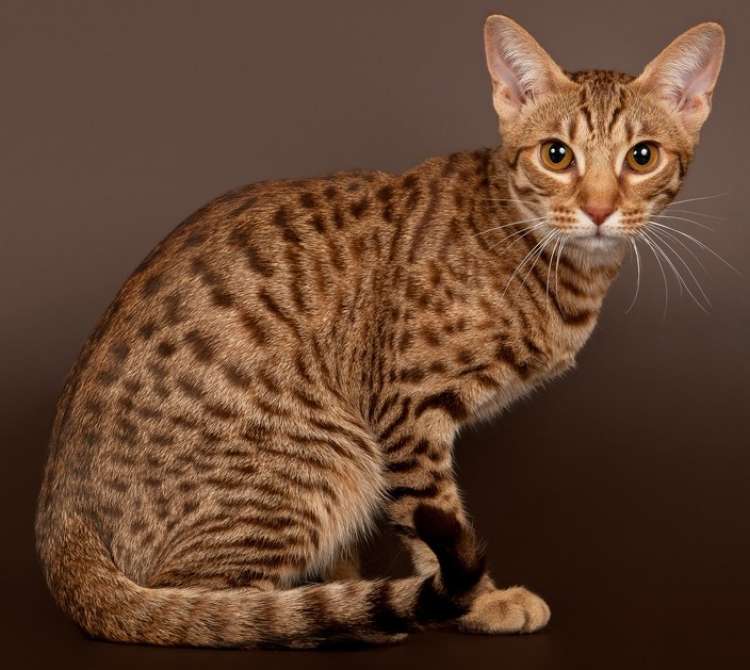
Ocicat
Cómo es la raza del gato Ocicat o gato Ocelote
Seccion: Cómo es la raza del gato Ocicat o gato Ocelote
Este gato, junto otras razas como el Mau egipcio o el gato de Bengala, es uno de los felinos con una apariencia más salvaje. ...
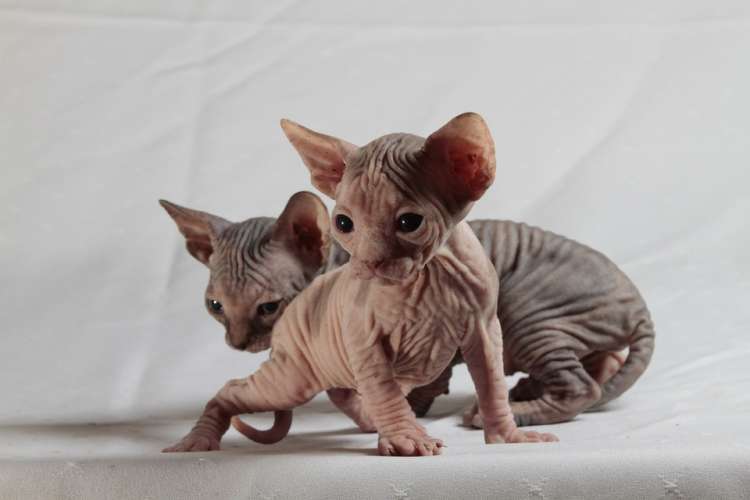
Sphynx
Cómo es la Raza del Gato Sphynx, Esfinge o Egipcio
Seccion: Cómo es la Raza del Gato Sphynx, Esfinge o Egipcio
Esta raza de gato ha estado rodeada de prejuicios desde su aparición debido al desconocimiento generalizado que existe sobre su origen y sobre todo, de sus cualidades. Son estupendos compañeros y muy buenos c ...
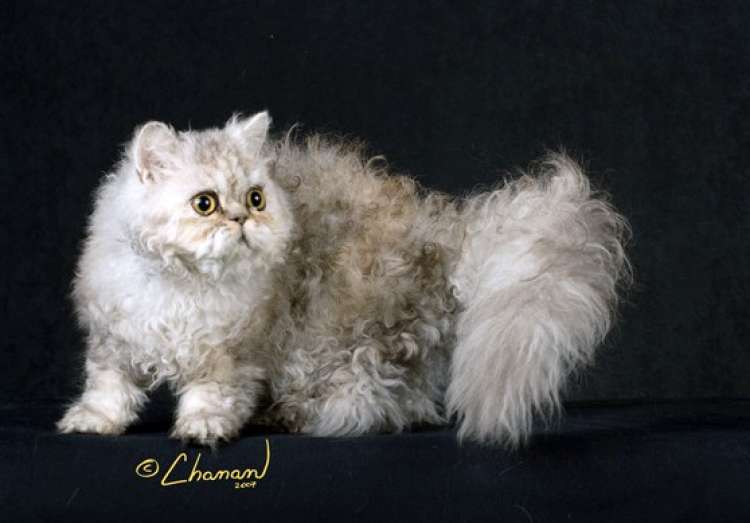
Selkirk Rex
Cómo es la raza del gato Selkirk Rex
Seccion: Cómo es la raza del gato Selkirk Rex
El Selkirk Rex es una de las más recientes razas naturales cuya característica principal está en su pelo rizado. Se dice que es una raza natural porque ha nacido de una mutación espontánea en la que no ha ...
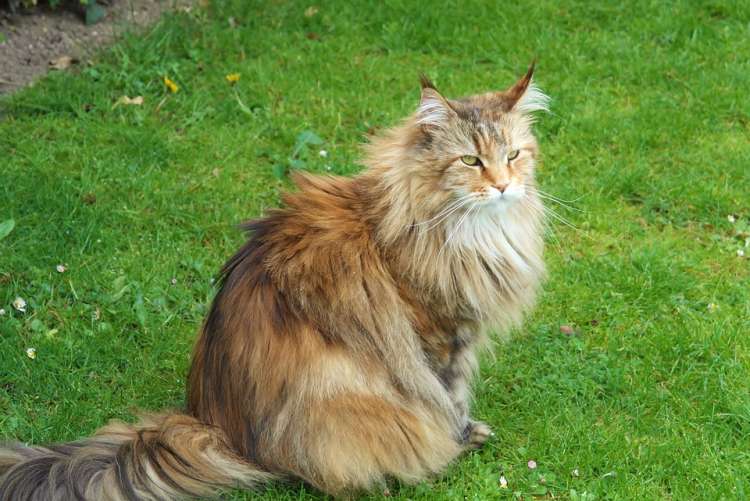
Siberiano
Cómo es la raza del Gato Siberiano
Seccion: Cómo es la raza del Gato Siberiano
El Gato Siberiano, grande y poderoso, origen ruso muy activo y cariñoso, junto al Maine Coon y al Bosque de Noruega, es uno de los integrantes de los llamados ?gatos de bosque, con quienes comparte caracterís ...
MIELOPATÍA DEGENERATIVA
Seccion: Un Resumen de la enfermedad Mielopatía Degenerativa (D.M.). La Mielopatía Degenerativa canina (D.M.) es una enfermedad neurodegenerativa grave con inicio tardío aproximadamente al octavo año de edad. ...
Resumen de la Enfermedad de VON WILLEBRAND (vWD).
Seccion: Un Resumen de la enfermedad de Von Willebrand (vWD). La enfermedad de von Willebrand (vWD) es el trastorno hemorrágico de carácter hereditario más común, el cual abarca desde una forma asintomática hasta ...
Kerry Blue Terrier
Degerative Mielopaty (DM)
Seccion: Degerative Mielopaty (DM)
Degerative Mielopaty (DM) is an important neurodegerative disease which starts at an old age around 8 years of age. The disease is produced by a degeneration of the axons and of the myelin in the thoracic and s ...
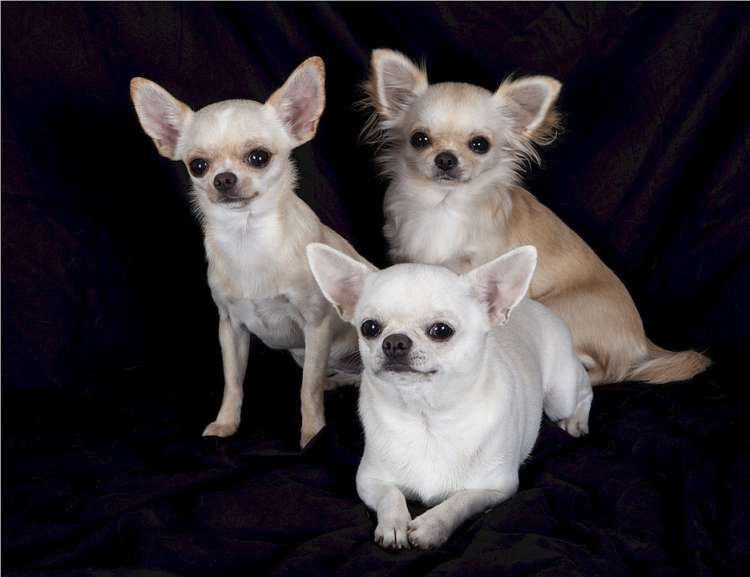
Chihuahueño
Cómo es la raza del chihuahua
Seccion: Cómo es la raza del chihuahua
El perro chihuahueño, es considerado la raza de perro más pequeña del mundo. Es originaria de México. También conocido fuera de México como chihuahua. ...
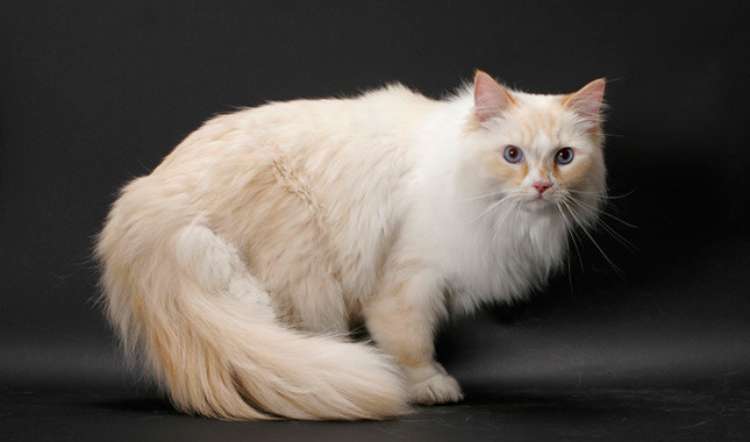
Cómo es el gato Ragamuffin
Seccion: Una raza muy poco conocida, con un origen misterios, pero gatos de gran corazón, cariñosos y sociables. Conoce un poco más de esta raza.´ ...
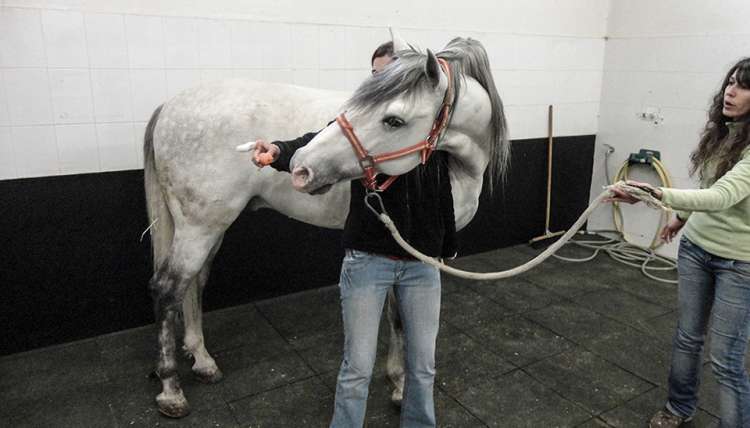
¿Qué es la Fisioterapia Animal?
Seccion: La Fisioterapia según la Organización mundial de la Salud ( O.M.S.) se define en 1958 como: ?La técnica y la ciencia del tratamiento a través de: medios físicos, ejercicio terapéutico, masoterapia y elect ...

Por :

La Homeopatia.
Seccion: La Homeopatía Unicista es un sistema médico que se basa en leyes naturales. ...

Por :
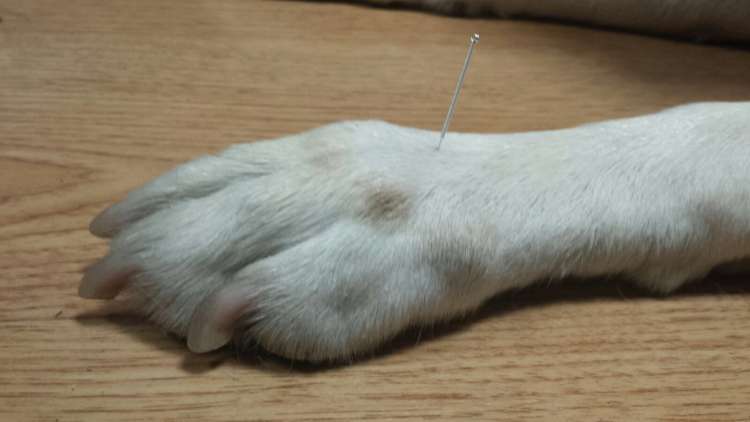
¿Qué es la Acupuntura?
Seccion: Consiste en la inserción y manipulación de agujas en el cuerpo con el objeto de restaurar la salud y el bienestar. Buscamos el equilibrio entre el cuerpo y la mente. ...

Por :
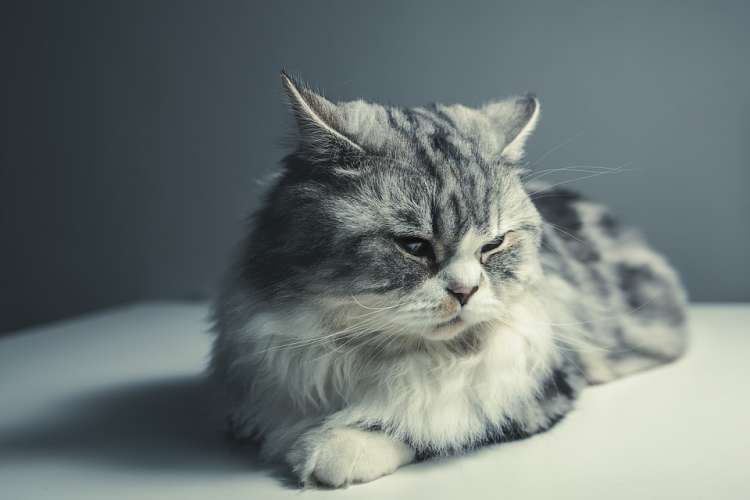
Persa
Cómo es la raza de gato Persa
Seccion: Cómo es la raza de gato Persa
Después de pasar varias décadas siendo gatos exclusivos de la realeza y de personalidades de la música, escritores o gente influyente, el gato persa es en la actualidad una de las razas de gatos más codicia ...
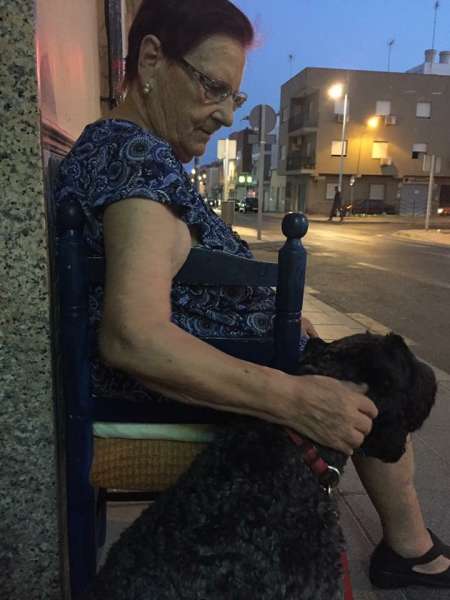
Kerry Blue Terrier
Historia de Hugo
Seccion: Historia de Hugo
Tú estás loca Paquita, no tienes bastante con los niños, los colegios, las clases particulares, la casa... como para ahora echarte también el cargo de un perro. Pues a mi casa ni se te ocurra traérmelo, e ...
